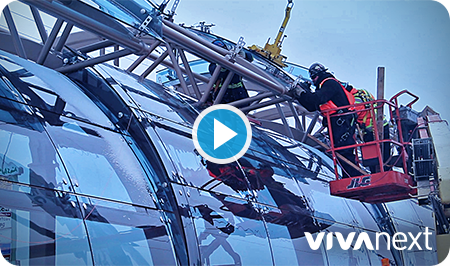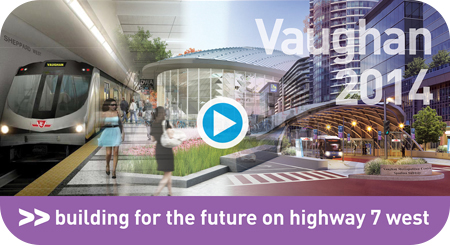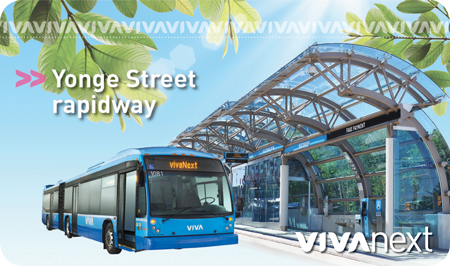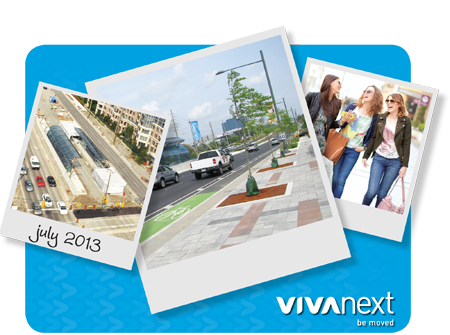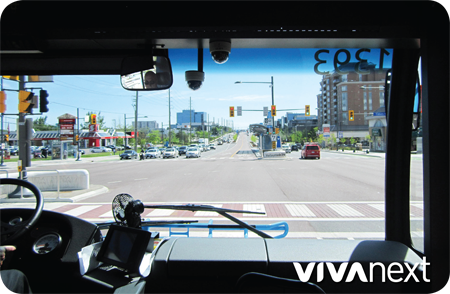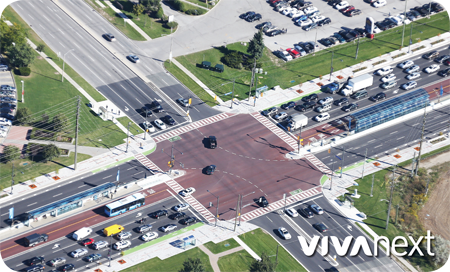Throughout the fall and winter, crews have endured every kind of weather Mother Nature has thrown their way, while installing the vivastation at Longford/Parkside and Davis. There are many detailed steps to constructing a vivastation, and as we shared with you last year, it takes careful planning and precision throughout those stages of the construction.
We’ve captured components of the delivery, installation and construction for the west and eastbound platforms at Longford and Davis on video to provide you with a behind-the-scenes look and better understanding of what it takes to build a vivastation. All of the vivastations that are built as part of the vivaNext bus rapidway project are an important component of the top-notch transit system in York Region. When the Davis rapidway is in service this December 2015, transit users will enjoy the convenience of the new-technology and innovative features that each Viva vehicle and vivastation offers.
As you can see in the video, the vivastation was constructed piece-by-piece, like a puzzle, and crews will continue braving the elements to add the finishing touches to the west and eastbound platforms at Longford/Davis throughout the year. The vivastations at Main and Southlake Regional Health Centre are also progressing right on schedule and will give transit riders all the same conveniences.
By the end of the year, Viva will be running on Davis Drive from Yonge Street to Highway 404 and residents and visitors to the area will begin to experience the benefits of having rapid transit at their doorsteps. We know living through construction hasn’t been easy and we’re grateful for everyone’s patience as we work as quickly as possible to complete this large undertaking.

